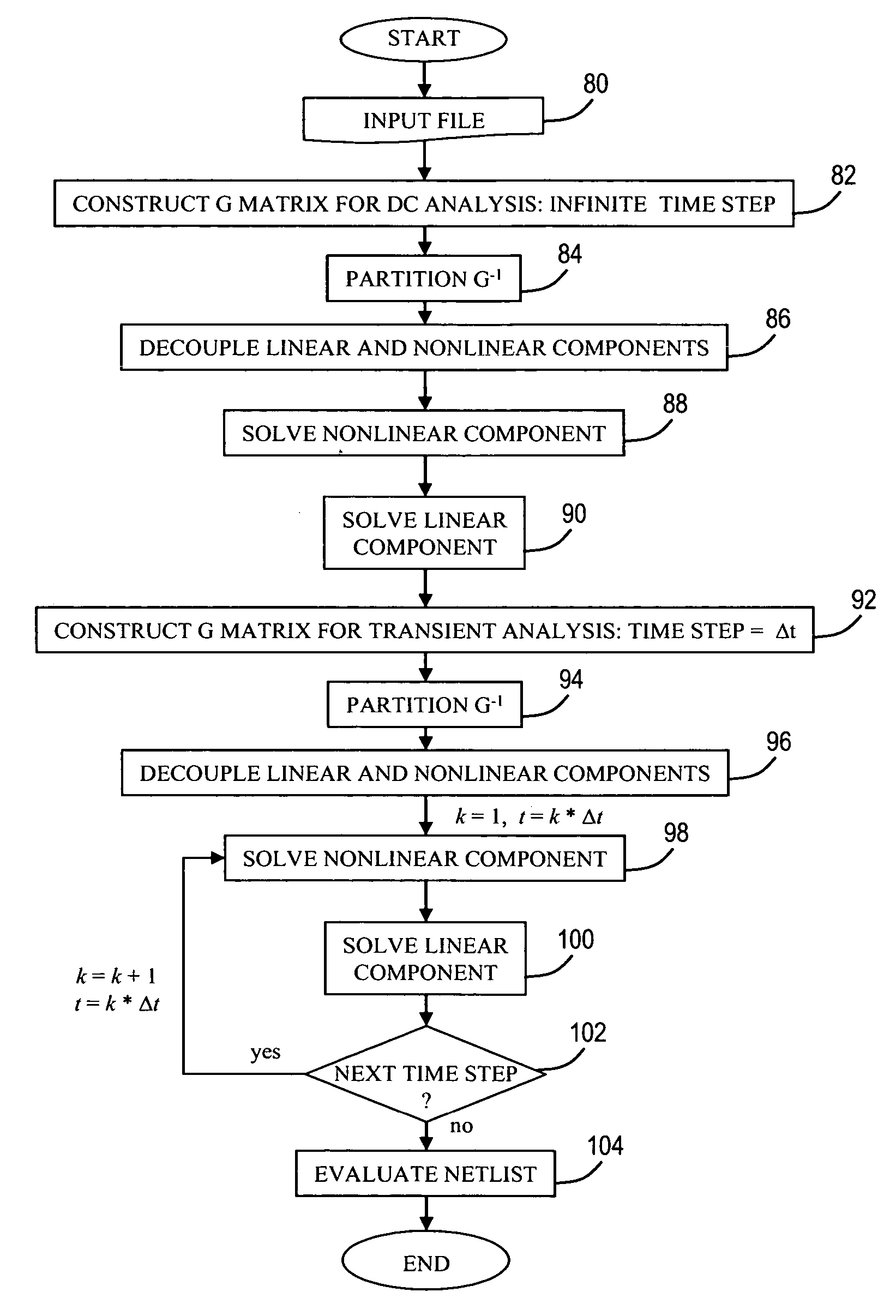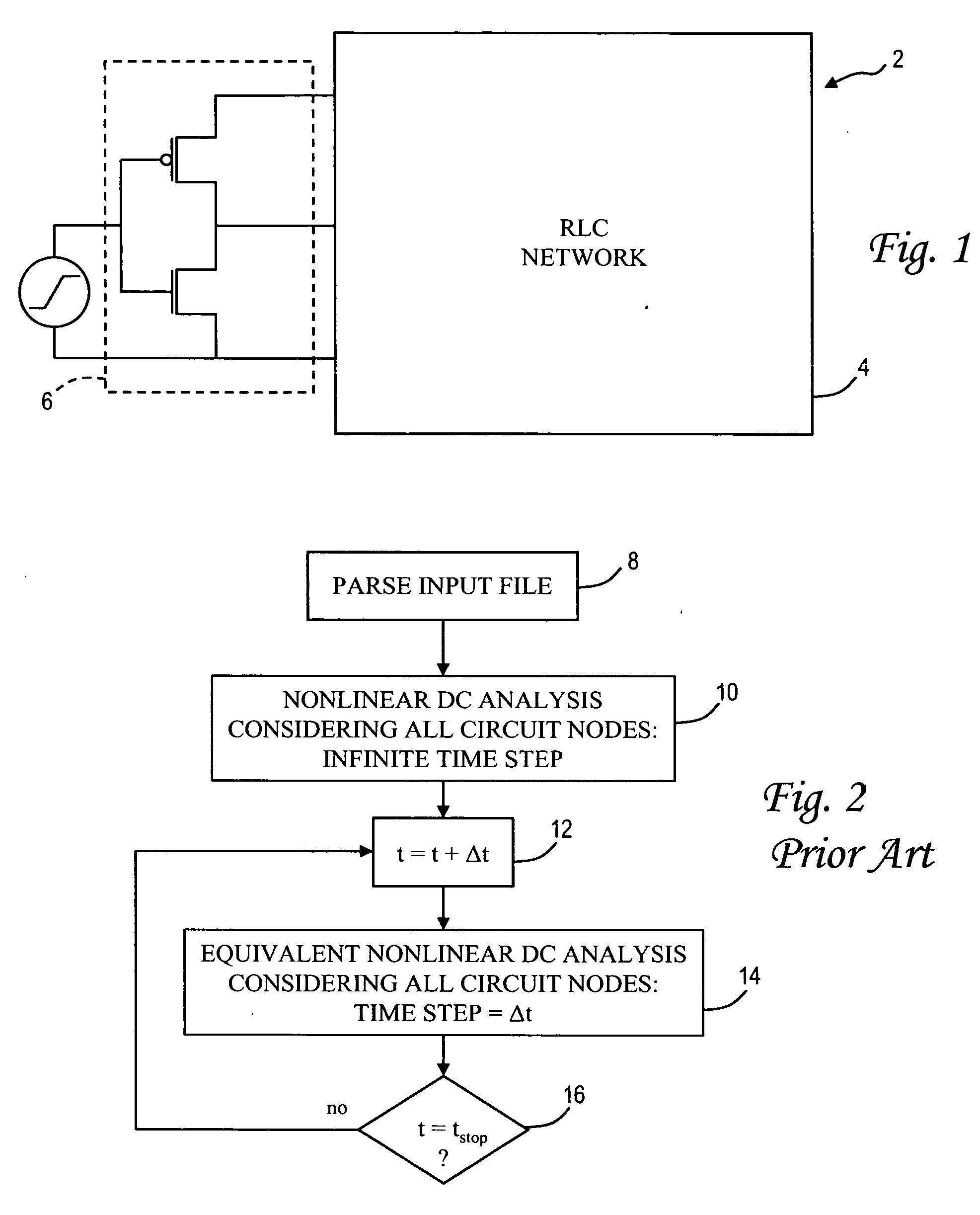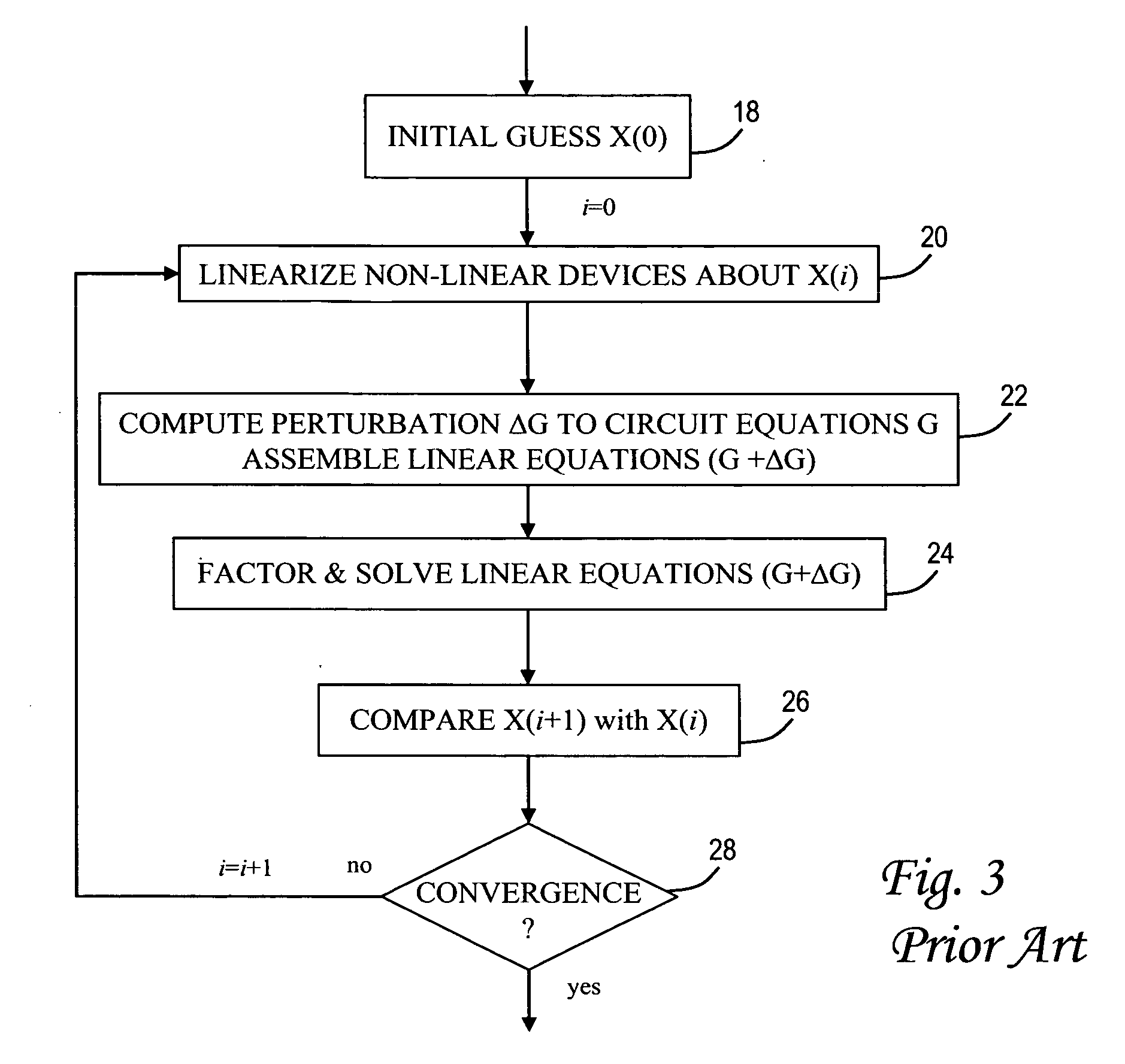Efficient simulation of dominantly linear circuits
a dominantly linear, efficient technology, applied in the direction of electric digital data processing, instruments, computing, etc., can solve the problems of large number of cells, difficult to simulate physical design without the aid of computers, and complex connections between cells, so as to speed up the simulation of dominantly linear circuits and efficiently simulates
- Summary
- Abstract
- Description
- Claims
- Application Information
AI Technical Summary
Benefits of technology
Problems solved by technology
Method used
Image
Examples
Embodiment Construction
)
[0027] The present invention provides a method for the efficient simulation of dominantly linear circuits using a reduced Newton-Raphson technique and reused factorization with a direct solver, as explained more fully below. A “dominantly linear circuit” refers to a circuit wherein the linear portions (e.g., resistive, capacitive and inductive elements) significantly outweigh the nonlinear portions (e.g., transistors or diodes). Although the present invention is applicable to circuits having a fairly large nonlinear portion, it is deemed most efficient when applied to a circuit in which the nonlinear portion is no more than about 1% of the circuit elements.
[0028] With reference now to the figures, and in particular with reference to FIG. 4, there is depicted one embodiment 30 of a computer system programmed to carry out the simulation of a dominantly linear circuit in accordance with one implementation of the present invention. System 30 includes a central processing unit (CPU) 32...
PUM
 Login to View More
Login to View More Abstract
Description
Claims
Application Information
 Login to View More
Login to View More - R&D
- Intellectual Property
- Life Sciences
- Materials
- Tech Scout
- Unparalleled Data Quality
- Higher Quality Content
- 60% Fewer Hallucinations
Browse by: Latest US Patents, China's latest patents, Technical Efficacy Thesaurus, Application Domain, Technology Topic, Popular Technical Reports.
© 2025 PatSnap. All rights reserved.Legal|Privacy policy|Modern Slavery Act Transparency Statement|Sitemap|About US| Contact US: help@patsnap.com



